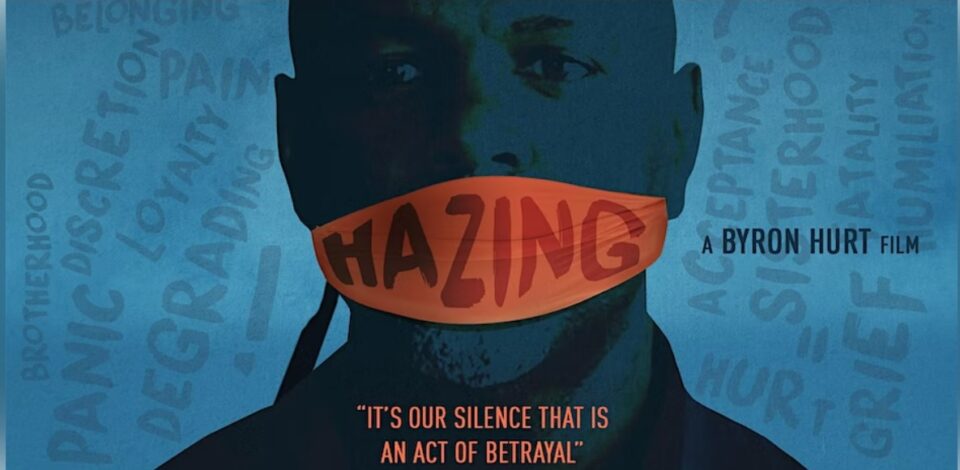Originally published Sept. 19, 2022
Filmmaker Spotlights Practice That’s All but Divine
‘Race or Reckoning’: Journal-isms at NABJ/NAHJ22
Blacks Voice Mixed Emotions on Queen’s Death
More to Martha’s Vineyard Than ‘Upscale,’ ‘Fancy’
Coverage of Immigrants an International Issue
H.S. Adviser Wins in Student Press Freedom Case
Time for Bolder Language on Threats to Democracy
Short Takes: ‘DRUNKEN NEGRO USES GUN’; Frank Shyong and Henry Furhmann; David Louie; evolution of “woke” word; “Reliable Sources” newsletter; NABJ and Black prime-time anchors; Eyder Peralta; Serena Williams; Peter Bhatia, Frances (Toni) Murphy Draper, David Knight, Charles Pittman; Cheryl L. Smith and Kimi Yoshino; Hispanic ‘invisibility’ on TV; Robert Samuels and Toluse Olorunnipa; Anamaria Sayre;
Lori Stokes; Patricia Janiot; Idris M. Diaz; Cronkite School and Diversity Pledge Institute; Andrea Coleman and Mike Stevens; Lottie Joiner; Organization of American States and independent journalism; assault on state-run Haitian broadcasting; investigative reporting in Tunisia;
human impact of racial representation in Brazilian newsrooms; disinformation tip line on WhatsApp for Spanish false information verification U.S.; former South African president Jacob Zuma targets reporter; historical racist tropes continue in S. African press; Israeli Palestinian journalist shot dead; Myanmar sentences journalist after sham trial.
Byron Hurt says, “I feel very confident that when most viewers actually take the time to watch the film in its entirety they will see that we did our research, treated this subject with a great amount of care, and upheld strong documentary ethics and accountability.”
Filmmaker Spotlights Practice That’s All but Divine
Byron Hurt’s movie opening this year’s “Independent Lens” series on PBS last week should have been watched by everyone who has even thought of joining a fraternity or sorority. And that’s a lot of folks, given the prominence of members of the “Divine Nine” that extend all the way up to Vice President Kamala Harris, a proud member of Alpha Kappa Alpha, or AKAs, as they’re known.
But there is still time, given that the film shows at various times in different places. Hurt’s “Hazing” is about the deadly and psychological toll the practice has taken in Black cultures and predominantly white ones. And the complicity of the post-college members who perpetuate the abuse with their silence. In the broader sense, it asks us to examine the lengths people will go to feel a sense of belonging, whether that be by joining a street or prison gang, a domestic terrorist group, a professional or religious organization or a Greek one.
Hurt, himself a member of Omega Psi Phi, spotlights such cases as that of:
“George Desdunes, whose line brothers at Cornell University allegedly tied up and quizzed the 19-year-old about the Sigma Alpha Epsilon fraternity, forcing him to drink whenever he got a question wrong. He died of acute alcohol poisoning,” as Candice Frederick notes in HuffPost.
“Kristin High, a 22-year-old mother who, along with 24-year-old Kenitha Saafir, drowned in 2002 during an alleged Alpha Kappa Alpha hazing incident at California State University, Los Angeles. The two pledges were forced to do calisthenics on the beach for hours into the night and then walk backward into the ocean, according to a lawsuit from High’s family.”
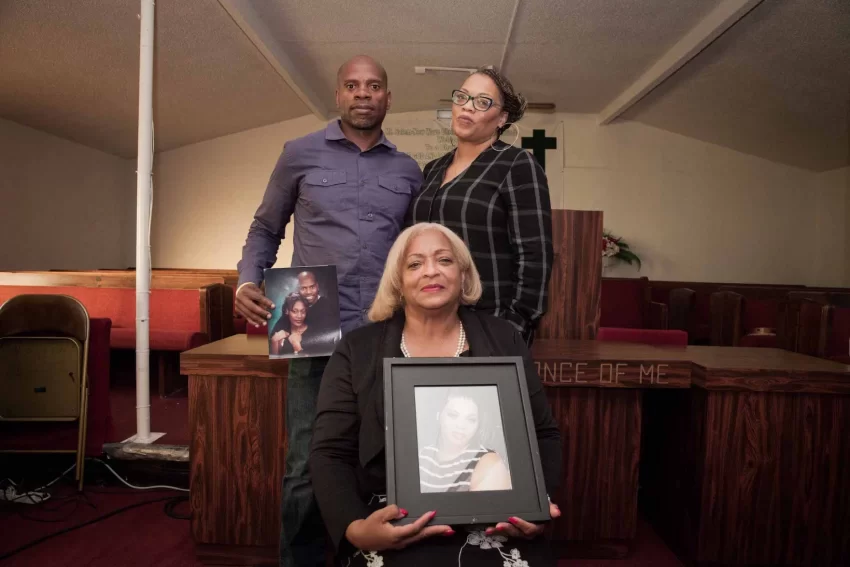

Karim Saafir, holding photo of Kenitha Saafir; Nikki High and Patricia Strong-Fargas, sitting, with a photo of Kristin High. (Credit: “Independent Lens”)
And there are others.
The PBS airing took place just before HazingPrevention.Org’s 2022 National Hazing Prevention Week, Sept. 19-23. The organization has information ready to help news media play their part in marshalling public attention.
Hurt undertook a “loving critique” of hip-hop in “Beyond Beats and Rhymes” in 2006.
This film took 10 years. In it, as John Anderson noted Sept. 8 in The Wall Street Journal, Hurt called out the external forces at play. “Hazing isn’t limited to college organizations — as we see through news clips and headlines, abusive initiations have caused havoc among nurses, the New York City Fire Department and, perhaps most important, the military,” Anderson wrote.
“(The point is made that only after the GI Bill enabled war vets to enroll in college were the hazing rites common to the armed services introduced at schools.) . . .
“Why don’t colleges and universities simply outlaw these organizations? For one thing, they would exist in secret, just as their rituals — the subject of bans that are widely ignored — would probably exist anyway. But they also cultivate power.
“More students live in Greek houses than anywhere besides college dorms; they own a vast amount of campus real estate; and their alumni members are the most faithful of donors. These points are mentioned only in passing, and quite late in the film. What’s barely touched upon is the importance of post-graduate networking that membership in a fraternity or sorority provides. If there’s a compelling reason for a student to undergo the often-disturbing rites detailed in ‘Hazing,’ it would be future connections.”
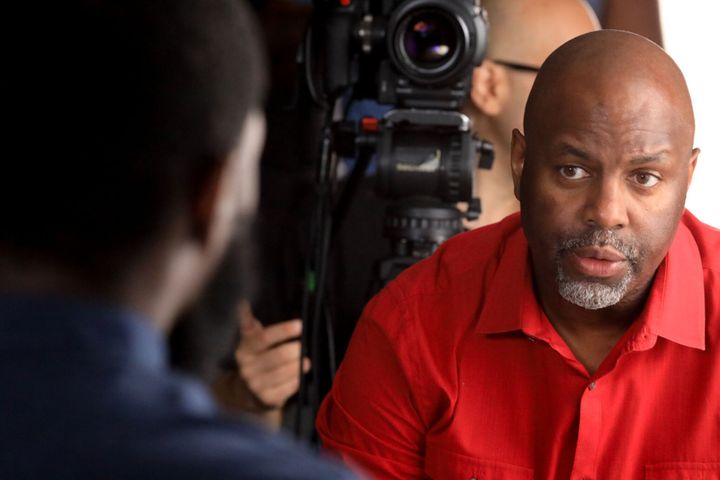
 Hurt (pictured) told Lauren Wissot in Filmmaker magazine, “There has been both a positive response and a negative response to the film. Many people, across racial and gender lines, who have seen the film in its entirety have reached out to me directly or have posted comments on my social media pages to express support for the film. My team and I have received that support and appreciate it greatly. And that chorus is growing more and more as people watch the film at film festivals.
Hurt (pictured) told Lauren Wissot in Filmmaker magazine, “There has been both a positive response and a negative response to the film. Many people, across racial and gender lines, who have seen the film in its entirety have reached out to me directly or have posted comments on my social media pages to express support for the film. My team and I have received that support and appreciate it greatly. And that chorus is growing more and more as people watch the film at film festivals.
“On the other hand, as I have long expected, there are also people who are not happy that I am taking on this issue in such a public way because it forces people to confront that which is right in front of them. The film is a mirror, and many people don’t like who they see inside that mirror when they see the ugly side of hazing culture that they’ve been silent about or complicit with. So they lash out at me, or the film, or simply refuse to watch it. I’ve been prepared for that kind of response, and I feel very confident that when most viewers actually take the time to watch the film in its entirety they will see that we did our research, treated this subject with a great amount of care, and upheld strong documentary ethics and accountability.”
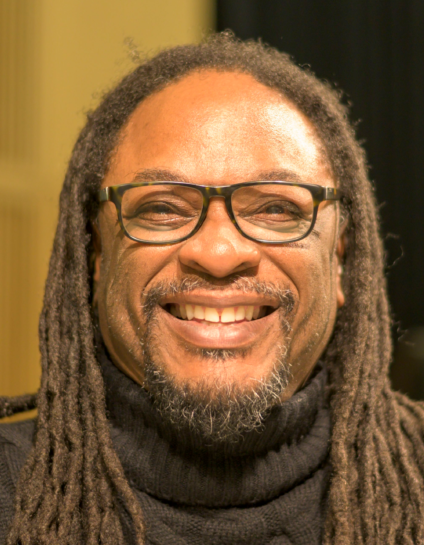 Lawrence C. Ross, Jr., (pictured) author of “The Divine Nine” and a member of the National Association of Black Journalists, appears in the film. “I think it was great,” Ross messaged Journal-isms Monday. “The hope is that it will act as a call to action within Black fraternities and sororities, as there needs to be a lot of heavy lifting to change the culture. It’s so baked into the idea of what is a real member that it would take outside help for them to figure out how to deal with it. Byron is a brave filmmaker for making this film because he knew the blowback would be fierce, and it is.
Lawrence C. Ross, Jr., (pictured) author of “The Divine Nine” and a member of the National Association of Black Journalists, appears in the film. “I think it was great,” Ross messaged Journal-isms Monday. “The hope is that it will act as a call to action within Black fraternities and sororities, as there needs to be a lot of heavy lifting to change the culture. It’s so baked into the idea of what is a real member that it would take outside help for them to figure out how to deal with it. Byron is a brave filmmaker for making this film because he knew the blowback would be fierce, and it is.
“NABJ needs to bring him to the next convention and have a conversation after. Most of us are NABJ members in the film.”
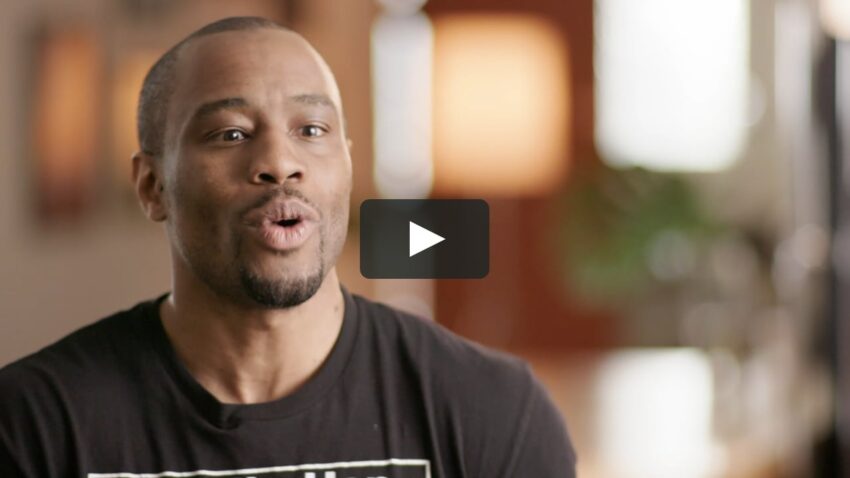

Marc Lamont Hill says, “deep down I’m probably afraid that at the end of the day I did all that sh-t for nothing.“
Another media figure in the film is Marc Lamont Hill, political commentator, TV host and professor, and member of Kappa Alpha Psi, Fraternity, Inc., Alvin aqua Blanco writes in Cassius. “At one point in the film, Hill is shown a damning video of a prospective member of his fraternity being paddled and brutalized. At first, Hill doesn’t really condone what he watched, but asserts it was indeed brutal when taken out of context. However, he eventually amends his reaction when he really takes in what he watched — the victim in the footage suffered debilitating damage to his spine while pledging.
“ ‘I struggle with this myself,’ says Hill. ‘And I think what scares me…cause I ask myself how is [it] that I have far more advanced and progressive conceptions of masculinity around love and relationships, around sports, around education, around all these other areas but why is this thing the thing where I tend to have a contradiction and I think part of it is that deep down I’m probably afraid that at the end of the day I did all that sh-t for nothing. That none of it mattered, that none of it meant anything, ya know. What I went through all of that, did all of that, for something that doesn’t amount to anything.”
Now that the film is out — it had a showing in June at the Tribeca Film Festival — Hurt says he plans to screen it nationwide at colleges and high schools. “The film has been invited to participate in the Southern Circuit Tour of Independent Filmmakers, which is exciting. It’s also getting a lot of requests to screen in educational settings during National Hazing Prevention Month in September — one week after the film’s broadcast on Independent Lens,” aqua Blanco wrote.
” ‘In addition to receiving funding from the Perspective Fund to create an impact campaign, we’re also applying for more impact funding to ensure that the people who need to see the film most will have access to it.’ “
Plenty of opportunities for news outlets to find that local angle.
(Credit: YouTube)
‘Race or Reckoning’: Journal-isms at NABJ/NAHJ22
A video of “Race or Reckoning,” a Journal-isms Inc. presentation at the joint convention of the National Association of Black Journalists and National Association of Hispanic Journalists in Las Vegas, is finally available, above.
The Aug. 4 discussion on how media have addressed diversity in a post-George Floyd world featured Richard Prince, co-moderator (remotely), Ana Cabrera of CNN, co-moderator; Leona Allen Ford, deputy publisher, chief talent and diversity officer, Dallas Morning News; Gilbert Bailon, managing editor/news, KERA-TV, Dallas; Michael Bolden, executive director and CEO, American Press Institute; and Wesley Lowery, named last week by the Craig Newmark Graduate School of Journalism as a journalist in residence.


A photo of African leaders on a bus to the funeral Monday of Queen Elizabeth II went viral. “Among the leaders was President William Ruto; seated next to him was his wife Rachel Ruto, who was gazing outside the window – and, directly in front of the First Lady, Tanzanian President Suluhu,” the Evening Standard of Kenya reported.
Blacks Voice Mixed Emotions on Queen’s Death
“The death of Queen Elizabeth II has evoked mixed emotions in Black communities around the world. Some praised her 70-year reign as a rare woman in the class of predominantly male world leaders, while others celebrated her death and the prospect of Black countries severing their ties to the monarchy,” Christina Carrega reported Saturday for Capital B.
Hers was one of several pieces in the run-up to Monday’s funeral that examined the reaction of Black people and Black countries to the queen’s passing at 96.
“The United Kingdom’s 14 commonwealth nations include several in the Caribbean and Central America, such as the Bahamas, Belize, Grenada, [St. Kitts and] Nevis, and St. Lucia. Days after the queen’s son was crowned King Charles III, the prime minister of Antigua and Barbuda announced he plans to hold a vote within three years on whether to remove their new leader from the island nation’s helm,” Carrega continued.
“The monarchy’s hold on other predominantly Black countries also has been weakening. Barbados parted ways with the commonwealth last November. And while Jamaica is still in the headcount, residents didn’t give Prince William and Kate Middleton a warm welcome in March when they visited the country.
“The queen’s death on Sept. 8 sparked a flurry of scathing statements about the monarchy’s history of colonialism and internet memes poking fun at the royals. But there also was mourning across the African diaspora, even beyond the boundaries of the kingdom. . . .”

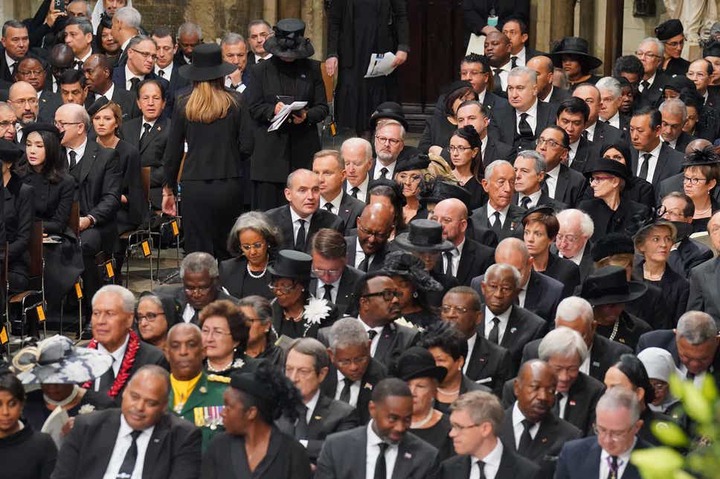
A multicultural assemblage of dignitaries Monday in Westminster Abbey in London. (Credit: Dominic Lipinski/His Majesty’s Press Association)
“Nicole Truesdell, an anthropologist and independent scholar who has dedicated her career to uncovering the truth about Black history, said Queen Elizabeth II worked overtime to keep her family relevant as other European monarchies were falling apart. Her reign began in 1952 when she was 25. . . .
“Capital B spoke with Truesdell about what the queen’s death means for the royal family’s reign in Black commonwealth nations and the complicated emotions it has created for Black people globally. The interview was edited for clarity and length. . . . “
- Africanews with AFP: Inside the archives of a top Kenyan photojournalist, with unseen images of the queen
- Zeeshan Aleem, MSNBC: Trying to modernize the British monarchy is a lost cause (Sept. 9, updated Sept 15)
- Jon Allsop, Columbia Journalism Review: Cancel culture, queues, and the Queen (Sept. 16)
- Nicholas Boston, The Voice, Britain: Playing black music at the Queen’s funeral would be a fitting tribute
- Hayes Brown, MSNBC: Queen Elizabeth II oversaw the end of empire. Charles could oversee the end of monarchy.
- Stacy M. Brown, National Newspaper Publishers Association: Queen Elizabeth’s Legacy Through the Lens of Colonialism and Black Lives
- Lauren Victoria Burke, National Newspaper Publishers Association: Death of Queen Elizabeth Ignites Debate on British Colonialism
- Anthea Butler, MSNBC: As a religious leader, Queen Elizabeth II was consistent but willing to adapt
- Amy Goodman and Denis Moynihan, “Democracy Now!”: The Impacts of Colonialism Outlive the British Queen
- Emil Guillermo, Asian American Legal Defense and Education Fund: The names in the confluence of history: 9/11 and a Queen’s funeral, an empire’s reckoning
- Simone Hanna, New Statesman, Britain: The Queen’s death has become an opportunity to bash Meghan
- Andrew Harding, BBC News: Queen Elizabeth’s death stirs South Africa’s colonial memories
- Isabel Nakirya and Zeba Warsi, “PBS NewsHour”: Death of Queen Elizabeth draws mixed reactions from former British colonies in Africa
- Mukoma Wa Ngugi, Caroline Elkins, “Democracy Now!”: Dismantle the Commonwealth: Queen Elizabeth’s Death Prompts Reckoning with Colonial Past in Africa
- Clarence Page, Chicago Tribune: Britain’s identity crisis — and ours
- Rachel Pannett and Michael E. Miller, Washington Post: For Indigenous Australians, painful colonial past mars queen’s legacy
- Barry Saunders, Saunders Report: Why, yes, the Queen did call former UNC cheerleader “Peaches.”
- Kenichi Serino and Justin Stabley, “PBS NewsHour”: What to know about calls for reparations for Britain’s legacy of slavery in the Caribbean
- Kimberly Atkins Stohr, Boston Globe: The queen we couldn’t stop watching is dead. The monarchy should be next. (Sept. 9)
- Harry Taylor, the Guardian: Sky News apologises for report mistaking protest for royal crowds
- Michael Paul Williams, Richmond (Va.) Times-Dispatch: Britain’s royal family, like the U.S., needs to atone for slavery
- Alex Weprin, Hollywood Reporter: U.S. TV News Networks Scramble to Cover the Funeral of Queen Elizabeth II
- Julia Wright, FTP Movement: Mourning Our Own Queens…

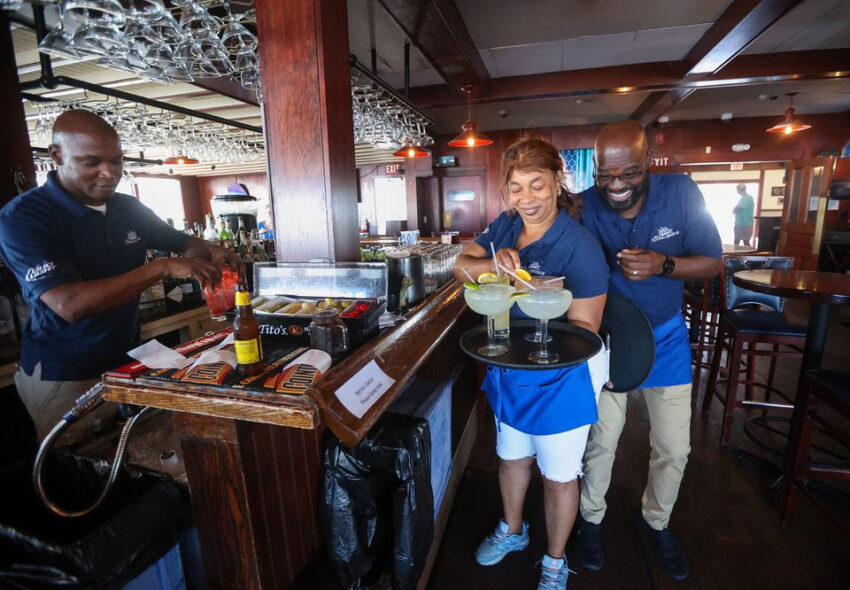
Leroy Barnes, Andrie McLaughlin and Norman Johnson, all of Jamaica, worked at the Flying Bridge restaurant in Falmouth, Mass., nine miles from Martha’s Vineyard. (Credit: Barry Chin/Boston Globe)
More to Martha’s Vineyard Than ‘Upscale,’ ‘Fancy’
The wording in reports like this one from CBS News gives some readers pause.
The network told viewers, “Florida Governor Ron DeSantis on Wednesday flew two planes of immigrants to Martha’s Vineyard, escalating a tactic by Republican governors to draw attention to what they consider to be the Biden administration’s failed border policies. Flights to the upscale island enclave in Massachusetts were part of an effort to ‘transport illegal immigrants to sanctuary destinations,’ said Taryn Fenske, DeSantis’ communications director. . . .”
Ditto from the Miami Herald. “Florida Gov. Ron DeSantis’ latest stunt to embarrass President Joe Biden — in advance hopes of replacing him in the Oval Office — was to dump immigrants stopped at the Southern border in a fancy community in New England that was not expecting or prepared to house them,” an editorial said.
The pause from some comes from the characterization of “Martha’s Vineyard” simply as “fancy” or as an “upscale island.”
Others are taking issue with coverage of immigrants in general, but Michele L. Norris addressed the “upscale” wording in The Washington Post:
“When people speak of Martha’s Vineyard, they usually refer to sprawling beaches, spectacular homes and marquee names such as the Obamas, the Clintons, Seth Meyers or Spike Lee,” Norris wrote Friday. “The island is known for its wealth, and, to be sure, there is a lot of that. But there is another Martha’s Vineyard that people don’t know much about, and it was on full display this week.
“Yes, there are Land Rovers and yachts here, but the Vineyard is primarily an island of farms and fishermen, a year-round population that lives close to the land and in many cases works hard to make ends meet.
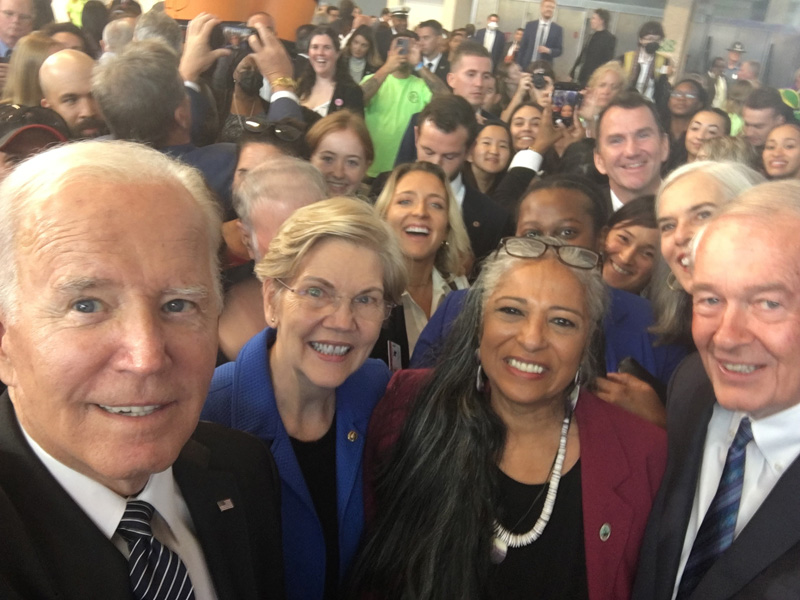

President Biden used the phone of Cheryl Andrews-Maltais to take a selfie of, from left, himself, Sen. Elizabeth Warren, Andrews-Maltais and Sen. Ed Markey. Andrews-Maltais is leader of the members of the Wampanoag Nation on Martha’s Vineyard. (Credit: Cheryl Andrews-Maltais.)
“It’s an island that seesaws between overwork and underemployment. It’s a place where everything — gas, food, housing, toothpaste, you name it — costs more than it does on the mainland. It’s a place where 1 in 6 year-round residents is a registered user of the Island Food Pantry and one-third of schoolchildren receive free or reduced-price lunch. . . .”
On Aug 14, Jamaican brothers Tavaris Bulgin, 26, and Tavaughn Bulgin, 21, died jumping from a bridge on the vineyard, Katie Johnston reported then for the Boston Globe. She noted that “of the more than 4,000 temporary foreign workers estimated to be on the Cape and Islands this summer, roughly a quarter are from Jamaica, most on H-2B visas, according to Cape Cod immigration lawyer and H-2B expert Matthew Lee.
“About 80 percent of the 160-person Cape Cod Restaurants workforce is from Jamaica, said general manager Tyler Hayes, who oversees the Flying Bridge and Red Horse Inn in Falmouth and Clancy’s in Dennisport. A few live on the Cape year-round, but most come on H-2B visas. The program has been a lifeline for seasonal employers on the Cape and Islands, Hayes said, as well as for foreign workers.
“ ‘They make enough money up here to take care of their families in a way that they couldn’t if they stayed home,’ Hayes said. ‘That’s why they come, that’s why they put up with the separation from their families, in order to better their lives back home.’ “
Eunki Seonwoo reported in May for the island’s MV Times, “The number of people who used the Island Food Pantry, which operates under Island Grown Initiative (IGI) and is located at the P.A. Club in Oak Bluffs, has more than doubled since 2019.“
The island is also populated by Native Americans, and “The leader of the Island’s Wampanoag Nation spent Sept. 12 and 13 in the company of another nation leader,” President Biden, the MV Times’ George Brennan reported.
Jill Nelson, author of “Finding Martha’s Vineyard: African Americans at Home on an Island,” told Journal-isms, “Generally speaking, I agree that the media and DeSantis and all focused on the rich and famous lives on the Vineyard, and ignore the inclusive nature of the island
“In the past decades there have been thousands of immigrants from Brazil who have been generally welcomed and integrated into the community. Also workers from Jamaica have come and stayed put down routes and build businesses, and there’s a strong contingent of eastern Europeans as well.
“This is not to say that there are no anti-immigrant idiots on the island. But if I remember correctly, 97% of the people on the Vineyard voted for Biden and Obama. . . .
“I was on the island when the Venezuelans arrived and overwhelmingly people wanted to help donate and assist in anyway possible. In fact, donations exceeded the needs.”
Coverage of Immigrants an International Issue
“Self-exploration exercises, including immigrant journalists in newsrooms and telling stories for immigrants (and not only about immigrants) are some of the tips to promote a more diverse and inclusive coverage of migration, according to panelists who took part in the Second Latin American Conference on Diversity in Journalism,” Silvia Higuera reported Friday for the Knight Center for Journalism in the Americas at the University of Texas.
She also wrote, “Héctor Villa León, who in addition to being a journalist is also an immigrant in Peru, called on large traditional media as well as native digital media to include immigrant journalists in their newsrooms, or at least have a close knowledge of this topic.
“In Peru, for example, some media’s coverage of the Venezuelan community’s migratory wave led to the stigmatization of those arriving in the country. Although it was not the language used in the media, social media echoed this stigmatization. It was common to use the word ‘veneco’ in a derogatory manner, Villa León said.
“In the midst of this difficult situation, which was later compounded by the COVID-19 pandemic, Cápsula Migrante was created. Its purpose was to provide this population with the necessary information to help them cope with their condition as immigrants and with the pandemic. According to Villa León, the pandemic made the situation even more complicated for Venezuelan immigrants who, in addition to not receiving the necessary help, did not receive information.
” ‘It was a very complicated context for all countries, but Venezuelans practically did not exist for the media,’ Villa León said. ‘There was a huge information gap.’
“The journalist insisted that in order to avoid these information gaps and stigmatizing narratives, immigrant journalists should be included either as part of the editorial staff or as consultants. He also agreed with [Mexican journalist Angeles] Madrigal on the need to look internally and strive to avoid narratives that discriminate.
” ‘Journalists, above all, should make adjustments to be less stigmatizing and help integrate immigrants to the country,’ Villa León said. . . .”
- Nicole Acevedo, Edwin Flores and Suzanne Gamboa, NBC: Who’s Latino? Amid growing numbers the definition is expanding
- Jenice Armstrong, Philadelphia Inquirer: Governors who shipped migrants North took a page from an old, racist playbook
- Ben Blanchet, HuffPost: Tucker Carlson Goes On Racist Rant To Celebrate Migrants’ Relocation To Martha’s Vineyard
- Jamelle Bouie, New York Times: What the Martha’s Vineyard stunt says about the Trump wannabes
- Laura Crimaldi, Boston Globe: Civil rights lawyers ask Healey, Rollins to open criminal investigation into migrants’ plight
- Matt Gertz, Media Matters for America: NY Times Magazine’s big profile of Ron DeSantis has a big problem: Journalists should look past spectacle to explain what he would do as president
- Noah Glasgow, Vineyard Gazette: Venezuelan Migrants Look to Next Steps at Joint Base Cape Cod
- Jean Guerrero, Los Angeles Times: Latinophobia in mainstream news fuels the radical right (Aug. 22)
- Gretchen A. Peck, Editor & Publisher: Reporting on immigration: Journalists share the perils & importance of the beat (Aug. 29)
- Lorenzo Reyes, USA Today: NFL misfires with blatant pandering during Hispanic Heritage Month

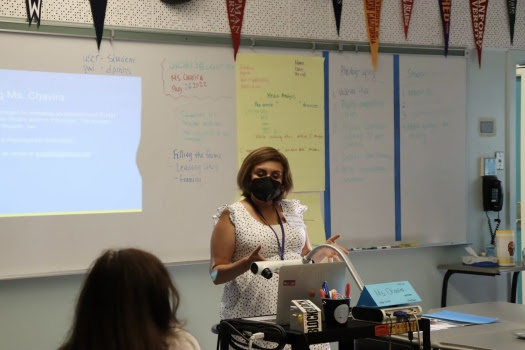
Journalism teacher Adriana Chavira speaks to students and parents at Daniel Pearl Magnet High School’s Back to School Night on Aug. 25. (Courtesy Delilah Brumer)
H.S. Adviser Wins in Student Press Freedom Case
“The Los Angeles Unified School District no longer plans to suspend Daniel Pearl Magnet High School journalism teacher and magazine adviser Adriana Chavira as originally planned following an outpouring of support from media associations and the family of the slain journalist whose name adorns the school,” Jason Henry reported Friday for the Pasadena Star News.
Chavira is the national academic at-large officer on the board of the National Association of Hispanic Journalists.
“A hearing officer accepted Chavira’s appeal of the suspension Sept. 16 but did not provide a reason, Chavira said in an interview.
“ ‘It is definitely a great sense of relief,’ she said. ‘This has dragged on way too long. It should have never happened.’
“Chavira faced a three-day suspension — and potential termination — for refusing to remove the name of an unvaccinated librarian from an article in the Pearl Post, the student-run magazine at Daniel Pearl Magnet High School in Lake Balboa. The story, written and edited by students, reported on the closure of the school’s library due to the teacher-librarian Greta Enszer’s decision not to follow LAUSD’s vaccination mandate.
“Chavira was ordered to remove the name and warned she could face discipline for insubordination if she did not comply. The administration accused her of disclosing confidential information and cited the Health Insurance Portability and Accountability Act, or HIPAA, a law protecting the release of an individual’s health information by medical providers, insurers and health plan administrators.
“The magazine adviser left the decision up to her students. They decided to leave the article up after meeting with an attorney with the Student Press Law Center.
“ ‘The information was newsworthy and it was definitely not libelous,’ Chavira said.
“California’s Education Code explicitly provides student publications with freedom of the press, regardless of whether the district funds their work. The same state law further bars schools from dismissing, suspending, disciplining or transferring an employee for protecting a pupil exercising that freedom.
“Pressure from the journalism community and Daniel Pearl’s family helped with her fight, she said. Pearl was a Wall Street Journal reporter captured and killed while on assignment in Pakistan. His father, Judea Pearl, the president of the Daniel Pearl Foundation, joined with more than a dozen journalism organizations to call on LAUSD to reconsider the disciplinary action. . . .”

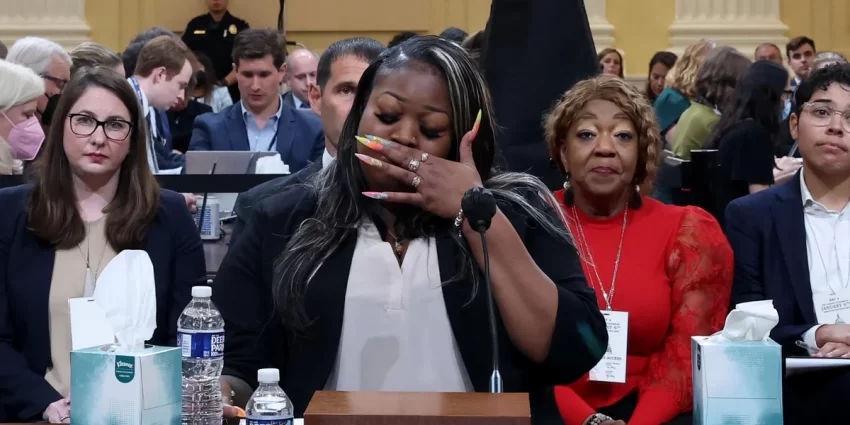
Shaye Moss is emotional while testifying as her mother, Ruby Freeman, watches during a June hearing by the Select Committee to Investigate the Jan. 6 attack on the U.S. Capitol. The two women were election workers in Fulton County, Ga., until a disinformation campaign upended their lives. Donald Trump’s attorney Rudy Giuliani accused them of committing election fraud in 2020.(Credit: Michael Reynolds/Pool)
Time for Bolder Language on Threats to Democracy
“Donald Trump has gone full QAnon,” Jennifer Rubin wrote Monday for The Washington Post. “As he spoke during a rally for Ohio Republican candidates on Saturday, a soundtrack associated with the conspiracy theory played. That elicited one-armed salutes — another QAnon symbol — from many attendees.
“The display bore an uncanny resemblance to the infamous Nazi salute. The delusional incitement and zombie-like response should put to rest the notion that President Biden (or anyone) should be ‘reaching out’ to these people. They are unreachable, and pretending otherwise misleads voters.
“No Republican should ever escape an interview or news conference without being asked to condemn this monstrous event. The cynical GOP leaders who know that Trump is unfit for office and that many of his cult followers have become violent should not be treated as ordinary party hacks. They are enablers of a dangerous movement. Yet they continually evade persistent, aggressive questioning. . . .”
Rubin also wrote, “And herein rests the fundamental failure of the mainstream political media. Far too many continue to disguise the political reality we face. They refuse to use appropriate descriptors to describe Republican conduct, such as ‘fascist’ or ‘racist.’ Instead, they mislabel radical authoritarians as ‘conservatives.’ “
Rubin went on to discuss Florida Gov. Ron DeSantis’ sending of refugees and asylum-seeking to Democratic-led jurisdictions.
“Regardless of the legalities, the tactic is straight from the Jim Crow handbook. Though the GOP applauded DeSantis’s disdain for human beings fleeing dictatorial repressions, his actions followed in the steps of White citizens’ councils from the 1960s that bused thousands of Black Southerners to Northern communities. . . .”
More details here. The event is to be simulcast on Facebook.
- Jon Allsop, Columbia Journalism Review: Widening the lens on democracy
- Jamelle Bouie, New York Times: It Is a Well-Known Truth That Opponents of Democracy Don’t Want You to Have Nice Things
- Jelani Cobb, New Yorker: What It Took for Biden to Give His “Soul of the Nation” Speech (Sept. 8)
- collaborativejournalism.org: U.S. Democracy Day wraps with 395 news orgs, dozens of stories produced
- “Frontline,” “Lies, Politics and Democracy” (full documentary) (PBS/YouTube) (Sept. 6)
- Errin Haines, the 19th: Americans see the media as critical to democracy. Now what are we going to do with that?
- David Leonhardt, New York Times: ‘A Crisis Coming’: The Twin Threats to American Democracy
- Gretchen A. Peck, Editor & Publisher: American democracy in crisis: The press reframes democracy coverage to capture a perilous, critical moment in U.S. history
- Protect Democracy: The Authoritarian Playbook: How reporters can contextualize and cover authoritarian threats as distinct from politics-as-usual
- Juan Williams, The Hill: Democracy is at stake in this year’s midterms
Short Takes

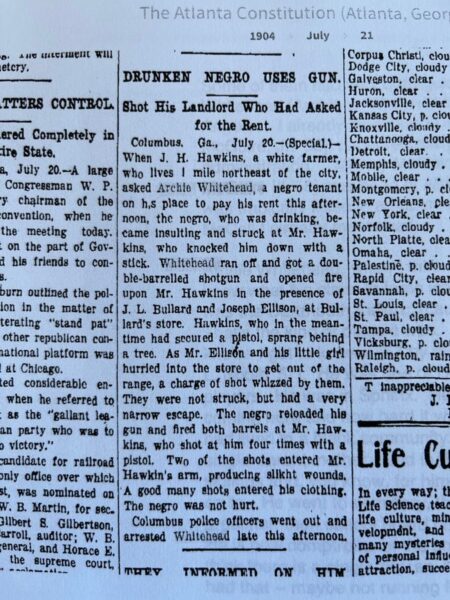
- My great grandfather makes an appearance in a 1904 police blotter item under the headline ‘DRUNKEN NEGRO USES GUN,‘ ” in the Atlanta Constitution, novelist Colson Whitehead tweeted Wednesday, underscoring the value of newspapers. “Yep, sounds like one of ours.”
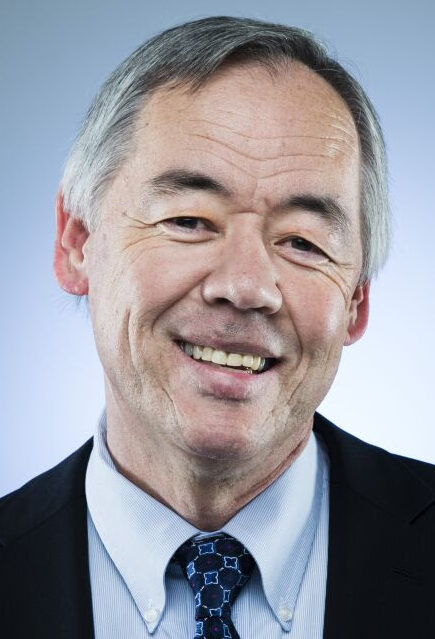 “I first met Henry at a journalism seminar organized by the Los Angeles chapter of the Asian American Journalists Assn,” columnist Frank Shyong wrote Monday about Henry Fuhrmann (pictured), editor and mentor to generations of journalists at the Los Angeles Times who died Sept. 14 at 65. “As a prize for correctly answering a question that I’m sure was quite trivial, he gave me a plain cream diner mug with black text: ‘Los Angeles Times Copy Desk.’. . . . I soon realized that Henry had given one to nearly everyone I knew in my journalism circles. … in the hands of the people he mentored, they have become symbols for Henry’s unique care for his community. . . . I’ve come to see these mugs as Henry’s answer to a question that we all face, at least those of us who count ourselves as part of any kind of institution or community. What do we owe the generation that comes after us? . . .”
“I first met Henry at a journalism seminar organized by the Los Angeles chapter of the Asian American Journalists Assn,” columnist Frank Shyong wrote Monday about Henry Fuhrmann (pictured), editor and mentor to generations of journalists at the Los Angeles Times who died Sept. 14 at 65. “As a prize for correctly answering a question that I’m sure was quite trivial, he gave me a plain cream diner mug with black text: ‘Los Angeles Times Copy Desk.’. . . . I soon realized that Henry had given one to nearly everyone I knew in my journalism circles. … in the hands of the people he mentored, they have become symbols for Henry’s unique care for his community. . . . I’ve come to see these mugs as Henry’s answer to a question that we all face, at least those of us who count ourselves as part of any kind of institution or community. What do we owe the generation that comes after us? . . .”
-
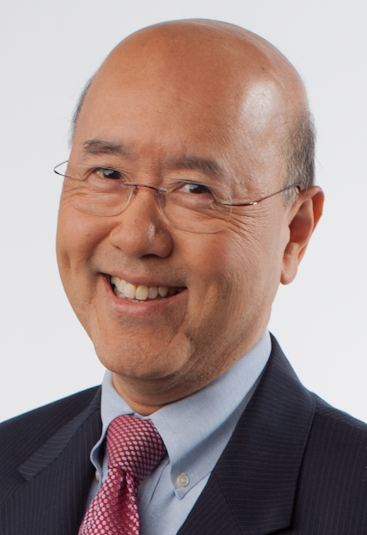 After 50 years and six months, David Louie (pictured), a past national president of the Asian American Journalists Association and former national chairman of the National Academy of Television Arts & Sciences, is retiring from ABC-owned KRO-TV in San Francisco. Louie joined KRO after graduation from Northwestern University’s Medill School of Journalism, Media and Integrated Marketing Communications. In April, he created the $2,000 David Louie Scholarship at Medill, with a preference for applicants of Asian American descent. Louie was a longtime board member of the Radio Television Digital News Association and a trustee of its sister foundation. KRO said it plans to celebrate Louie’s career the week of Sept. 26, Kevin Eck reported Thursday for TV Spy.
After 50 years and six months, David Louie (pictured), a past national president of the Asian American Journalists Association and former national chairman of the National Academy of Television Arts & Sciences, is retiring from ABC-owned KRO-TV in San Francisco. Louie joined KRO after graduation from Northwestern University’s Medill School of Journalism, Media and Integrated Marketing Communications. In April, he created the $2,000 David Louie Scholarship at Medill, with a preference for applicants of Asian American descent. Louie was a longtime board member of the Radio Television Digital News Association and a trustee of its sister foundation. KRO said it plans to celebrate Louie’s career the week of Sept. 26, Kevin Eck reported Thursday for TV Spy.
 How did the word ‘woke’ go from ‘Black’ to bad? asks Ishena Robinson, who traces the lineage for the NAACP Legal Defense Fund. ” ‘To be woke is to be Black,’ is how Okayplayer Senior News and Culture Reporter Elijah Watson defined the Black American colloquialism, now broadly used derisively, when he embarked on a journey in 2017 to plot its origins. . . . Michael Harriot, columnist at TheGrio and author of the upcoming book, Black AF History: The Unwhitewashed Story of America, explains that this kind of insidious takeover and flipping of Black vernacular to anti-Black pejorative has numerous parallels in America’s past and runs all the way up to present day. . . .”
How did the word ‘woke’ go from ‘Black’ to bad? asks Ishena Robinson, who traces the lineage for the NAACP Legal Defense Fund. ” ‘To be woke is to be Black,’ is how Okayplayer Senior News and Culture Reporter Elijah Watson defined the Black American colloquialism, now broadly used derisively, when he embarked on a journey in 2017 to plot its origins. . . . Michael Harriot, columnist at TheGrio and author of the upcoming book, Black AF History: The Unwhitewashed Story of America, explains that this kind of insidious takeover and flipping of Black vernacular to anti-Black pejorative has numerous parallels in America’s past and runs all the way up to present day. . . .”
- “With the cancellation of CNN’s ‘Don Lemon Tonight,’ NABJ is even more concerned about the lack of Black representation in prime-time cable lineups,” the National Association of Black Journalists said Tuesday. “After host Don Lemon’s departure, MSNBC’s Joy Reid will be the only Black host of a prime-time cable news and information program. . . .”
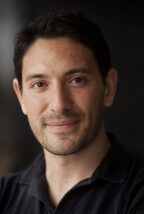 Eyder Peralta (pictured) has been named Mexico City correspondent, after six years reporting from Africa,” and “Carrie Kahn is moving to Rio de Janeiro to become NPR’s South America correspondent, after a decade spent covering Mexico, Central America and the Caribbean,” Didrik Schanche, chief international editor, announced Friday.
Eyder Peralta (pictured) has been named Mexico City correspondent, after six years reporting from Africa,” and “Carrie Kahn is moving to Rio de Janeiro to become NPR’s South America correspondent, after a decade spent covering Mexico, Central America and the Caribbean,” Didrik Schanche, chief international editor, announced Friday.
- “The world of tennis, specifically, has historically been elite and white-dominated, a disparity long reflected in the press corps that covers it,” Jon Allsop wrote Sept. 6 for Columbia Journalism Review, citing a conversation with Jon Wertheim and Scott Price. “The Williams sisters challenged that status quo. They also challenged the broader convention — as Erin Whiteside, a scholar at the University of Tennessee, wrote for The Conversation last week — that sports journalism in the US should be apolitical, and set apart from bigger social questions. Serena Williams’s ‘presence as a Black woman in a historically white, patriarchal sport, her commitment to activism and her willingness to bare her personal challenges to the public’ forced a reckoning with those norms, Whiteside wrote. ‘If scholarship on sports journalism suggests the boundaries of the genre are rapidly changing’ now, the field is shedding its stick-to-sports ethos, in part, due to activist-minded athletes like Serena Williams.’ . . .”
- “As the tennis community continues to celebrate the remarkable career of Serena Williams, who announced she is evolving away from the sport after this year’s Open, I can’t think of a better way for the USTA to pay tribute to the greatest than to name the practice pavilion after her and her family,” LZ Granderson wrote Aug. 31 for the Los Angeles Times, referring to the United States Tennis Association.
- Editor & Publisher’s annual salute to “15 over 50” drew so many reader nominations that the feature was expanded to “25 over 50,” Robin Blinder, associate publisher and vice president of content, wrote Sept. 1. Among those of color: Peter Bhatia, 69, editor and vice president, Detroit Free Press, and Michigan and Ohio regional editor of the USA Today Network; Frances (Toni) Murphy Draper, CEO and publisher, Afro-American newspapers; David Knight, 62, chief revenue officer, Advance Ohio, Cleveland; Charles Pittman, 74, senior vice president of publishing, Schurz Communications, Inc., South Bend, Ind.; Cheryl L. Smith, 64, publisher and executive editor, I Messenger Media (Texas Metro News, Garland Journal, I Messenger and Metro News), Dallas; and Kimi Yoshino, 50, editor in chief, Baltimore Banner, Baltimore. Editor & Publisher did separate pieces on Smith and the Afro-American.
- “Hispanics feel underrepresented, almost invisible, on TV — and that should be a concern for marketers missing out on what could be effective campaigns to Latinos, experts on the subject said Wednesday at the Hispanic TV Summit during NYC TV Week,” Kent Gibbons reported Thursday for Broadcasting & Cable.
- “His Name Is George Floyd: One Man’s Life and the Struggle for Racial Justice,” by Washington Post reporters Robert Samuels and Toluse Olorunnipa, was a nonfiction nominee in the National Book Awards, Hillel Italie reported Thursday for the Associated Press.
 “Anamaria Sayre will be joining Felix Contreras (pictured) as co-host on a newly reimagined Alt.Latino from NPR Music, NPR announced Sept. 13 “They will focus on exploring history and cultural context through music in a conversational way, including feature stories and personal experiences of Latinx artists including Omar Apollo, Rosalía, Carla Morrison and more. . . .”
“Anamaria Sayre will be joining Felix Contreras (pictured) as co-host on a newly reimagined Alt.Latino from NPR Music, NPR announced Sept. 13 “They will focus on exploring history and cultural context through music in a conversational way, including feature stories and personal experiences of Latinx artists including Omar Apollo, Rosalía, Carla Morrison and more. . . .”
 ” Lori Stokes (pictured), anchor on WNYW New York, will retire after September 30. She anchors the 5, 6 and 10 p.m. news on the Fox station, which she joined in 2017,” Mike Malone reported Wednesday for nexttv.com. “Prior to WNYW, Stokes was co-anchor on Eyewitness News This Morning at WABC New York, where she worked for 17 years. Before that, she was at MSNBC/NBC.” She is also the daughter of Louis Stokes, the Cleveland civil rights leader and politician who served 15 terms in the U.S. House of Representatives, and sister of Chuck Stokes, editorial/public affairs director at WXYZ-TV in Detroit. A daughter, Alex Stokes, was television reporter in Cleveland for five years and is now in public relatinos.
” Lori Stokes (pictured), anchor on WNYW New York, will retire after September 30. She anchors the 5, 6 and 10 p.m. news on the Fox station, which she joined in 2017,” Mike Malone reported Wednesday for nexttv.com. “Prior to WNYW, Stokes was co-anchor on Eyewitness News This Morning at WABC New York, where she worked for 17 years. Before that, she was at MSNBC/NBC.” She is also the daughter of Louis Stokes, the Cleveland civil rights leader and politician who served 15 terms in the U.S. House of Representatives, and sister of Chuck Stokes, editorial/public affairs director at WXYZ-TV in Detroit. A daughter, Alex Stokes, was television reporter in Cleveland for five years and is now in public relatinos.
- “Patricia Janiot spent 26 years as lead anchor at CNN en Español, but barely lasted 5 years with Univision. She is no longer with the company,” Veronica Villafañe reported Sept. 12 for her Media Moves site.
- A celebration of life took place Sept. 11 for Idris M. Diaz, perhaps the first Muslim to write about taking part in the annual hajj to Mecca for a mainstream American newspaper, the Philadelphia Inquirer. He then went on to become a lawyer and State Department envoy. Diaz died at 61 in July 2021 (scroll down) of a rare stream of leukemia.
- “Arizona State University’s Walter Cronkite School of Journalism and Mass Communication is partnering with The Diversity Pledge Institute (DPI) to launch a series of initiatives to help improve diversity, inclusion and retention throughout the journalism and strategic communication industries,” the school announced Sept. 6. “Under the collaboration, the Cronkite School and DPI will train and mentor students to succeed in finding job opportunities, getting hired and growing their careers, and will implement a week-long news bootcamp for students. . . .”
- “BIN: Black Information Network has promoted Andrea Coleman to Vice President of News Operations, while Mike Stevens becomes BIN’s first-ever Managing Editor,’ Radio Ink reported Thursday. “The shift in leadership structure comes after the passing of Tanita Myers, who joined BIN in June 2020 and was most recently serving as Vice President of News Operations. . . .”
- “Lottie Joiner, an award-winning journalist with more than two decades of experience covering issues that impact underserved and marginalized communities, is joining Verite’s newsroom leadership team as assistant managing editor,” Verite, a start-up that calls itself a “Non-Profit Newsroom to Prioritize Service Journalism and Representative Reporting for Underserved Communities in New Orleans.” Joiner is the former editor-in-chief of The Crisis magazine, official publication of the NAACP.
- The secretary general of the Organization of American States (OAS), Luis Almagro, launched the Center for Media Integrity of the Americas in June, Victoria Holmes reported Sept. 8 for Editor & Publisher. According to the Center’s press release, “the goal is to promote and support the practice of independent, non-interest affiliated journalism and social media production in the Americas.” The center’s director, John Feeley, former ambassador to Panama, “identifies five main forces against journalists: Governments, oppositions, incentives from foreign governments — such as Russia or China, corporate interests and criminal interests. . . .”
- “Demonstrators violently protesting against the economic policies imposed by the [Haitian] government assaulted Sept. 15 the headquarters of the state-run Radio Television Nationale d’Haiti (TNH), in the Delmas neighborhood,” the EFE news service reported Friday. “They set fire to three vehicles, threw stones at the building and stole equipment from the station, according to local media. The police dispersed and prevented the complete looting of the facilities. . . .”
- “In Tunisia, where the first protests of the Arab Spring took place, a start-up with a focus on investigative journalism and narrative storytelling is attempting to exploit the country’s relative media freedom to win over readers,” Ahmad Hamdo reported Wednesday for the Global Investigative Journalism Network. “Alqatiba, which means ‘The Battalion,’ is a multilingual, interactive digital magazine. It was founded in 2020 by Walid Mejri, the current director and a veteran journalist, who saw a space for an outlet with an independent voice in the region. In just its first year, the site attracted more than six million views and won six local, regional, and international awards, he says. . . .”


Brazilian journalists Luciana Camargo and Rodrigo Cabral made history in 2018 as the first Black duo to anchor a news program in the country, on the RedeTV! network. In Brazil, Black news anchors were 3.7 percent of the total. Brazil’s population is 54.5 percent Black. (Credit: RedeTV! Reproduction)
- “In Brazil, where 43.2% of the population identifies as White, and 55.7% as Afro-Brazilian, newsrooms are still staffed by 77% White employees,” Luiz Fernando Boaventura Teixeira wrote Aug. 16 for the Reuters Institute. “To measure the human impact of racial representation in Brazilian newsrooms, I created a questionnaire. . . . ‘It is frustrating to work in an environment with mostly White people.’ You won’t be surprised to read that one of my interviewees said this. You might be surprised that the interviewee who said it was White. Yes, the human impact of under-representation affects White journalists, too. Although the impact I recorded on Afro-Brazilians and Yellow people was far beyond mere frustration. Interviewees related stories about micro-aggressions and limited access that had far-reaching mental health impacts. Comments about physical appearance, and specifically about the hair of Afro-Brazilians, were shared with me repeatedly. . . .”
- “The news agency Agence France-Presse just launched a disinformation tip line on WhatsApp for Spanish false information verification in the United States ahead of the fall midterm elections,” Seth Smalley reported Thursday for the Poynter Institute.
- “South African journalism organisations this week rallied around well-known journalist Karyn Maughan when former president Jacob Zuma initiated a private prosecution against her,“ Anton Harber reported Sept. 8 for the Conversation. “Zuma faces 16 counts of corruption for taking a monthly payment of US$34,000 from French arms firm Thales while he was deputy president from 1999 and later president from 2009 to 2018. Thales was involved in South Africa’s massive arms purchase deal during that period. Zuma had originally laid charges against the prosecutor in his corruption case, Billy Downer, for giving a medical certificate from the investigation to Maughan. When the police declined to prosecute Downer, Zuma initiated a case against both him and Maughan for disclosing the information. . . .”
- A change from white ownership to considerable Black ownership through a government initiative did not significantly “transform historical racist tropes (over-used themes and clichés) of blackness in South Africa’s newspaper content,” according to a content analysis of six newspapers from the English-language press by Prinola Govenden, a post-doctoral research fellow at the University of Johannesburg. “Coverage was laden with racist assumptions about blackness and black people – as ‘deviants’, ‘disorderly’, ‘criminals’, ‘lawless’, ‘incompetent’, the ‘damned’, or ‘excessively violent’ in stories about black protesters, black labour and black leadership’s misdemeanours,” Govenden wrote Sept 12 for the Conversation.
- “Israeli Palestinian journalist Nidal Ighbariya, who specialised in covering violent crime, was shot dead by an unidentified gunman on September 4 as he drove home in the Arab town of Umm al-Fahm in the district of Haifa, Israel, the International Federation of Journalists reported Sept. 13. IFJ said it “condemns the murder and urges the Israeli authorities to launch an investigation and hold the perpetrators to account. . . .”

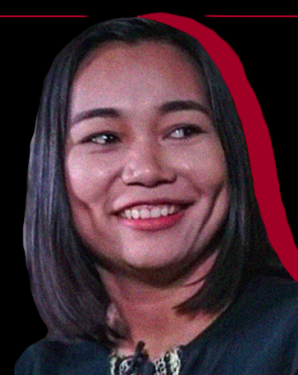 In Myanmar, a court in Yangon, the country’s largest city, convicted Htet Htet Khine (pictured), a Burmese freelance journalist and former BBC Media Action presenter, to three years in prison with hard labor in a sham trial Thursday after more than a year in pre-trial detention. She faces the possibility of an additional sentence, Reporters Without Borders said Friday. The journalist was found guilty on a charge of inciting hatred and violence against the armed forces in her reporting. “We call on Tom Andrews, the UN Special Rapporteur on the situation of human rights in Myanmar, to take action to end the spate of criminal convictions to which Burmese journalists are being subjected at an astonishing rate,” the press freedom group said.
In Myanmar, a court in Yangon, the country’s largest city, convicted Htet Htet Khine (pictured), a Burmese freelance journalist and former BBC Media Action presenter, to three years in prison with hard labor in a sham trial Thursday after more than a year in pre-trial detention. She faces the possibility of an additional sentence, Reporters Without Borders said Friday. The journalist was found guilty on a charge of inciting hatred and violence against the armed forces in her reporting. “We call on Tom Andrews, the UN Special Rapporteur on the situation of human rights in Myanmar, to take action to end the spate of criminal convictions to which Burmese journalists are being subjected at an astonishing rate,” the press freedom group said.
To subscribe at no cost, please send an email to journal-isms+subscribe@groups.io and say who you are.
Facebook users: “Like” “Richard Prince’s Journal-isms” on Facebook.
Follow Richard Prince on Twitter @princeeditor
Richard Prince’s Journal-isms originates from Washington. It began in print before most of us knew what the internet was, and it would like to be referred to as a “column.” Any views expressed in the column are those of the person or organization quoted and not those of any other entity. Send tips, comments and concerns to Richard Prince at journal-isms+owner@
View previous columns (after Feb. 13, 2016).
View previous columns (before Feb. 13, 2016)
- Diversity’s Greatest Hits, 2018 (Jan. 4, 2019)
- Book Notes: Is Taking a Knee Really All That? (Dec. 20, 2018)
- Book Notes: Challenging ’45’ and Proudly Telling the Story (Dec. 18, 2018)
- Book Notes: Get Down With the Legends! (Dec. 11, 2018)
- Journalist Richard Prince w/Joe Madison (Sirius XM, April 18, 2018) (podcast)
- Richard Prince (journalist) (Wikipedia entry)
- February 2018 Podcast: Richard “Dick” Prince on the need for newsroom diversity (Gabriel Greschler, Student Press Law Center, Feb. 26, 2018)
- Diversity’s Greatest Hits, 2017 — Where Will They Take Us in the Year Ahead?
- Book Notes: Best Sellers, Uncovered Treasures, Overlooked History (Dec. 19, 2017)
- An advocate for diversity in the media is still pressing for representation, (Courtland Milloy, Washington Post, Nov. 28, 2017)
- Morgan Global Journalism Review: Journal-isms Journeys On (Aug. 31, 2017)
- Diversity’s Greatest Hits, 2016
- Book Notes: 16 Writers Dish About ‘Chelle,’ the First Lady
- Book Notes: From Coretta to Barack, and in Search of the Godfather
- Journal-isms’ Richard Prince Wants Your Ideas (FishbowlDC, Feb. 26, 2016)
- “JOURNAL-ISMS” IS LATEST TO BEAR BRUNT OF INDUSTRY’S ECONOMIC WOES (Feb. 19, 2016)
- Richard Prince with Charlayne Hunter-Gault, “PBS NewsHour,” “What stagnant diversity means for America’s newsrooms” (Dec. 15, 2015)
- Book Notes: Journalists Follow Their Passions
- Book Notes: Journalists Who Rocked Their World
- Book Notes: Hands Up! Read This!
- Book Notes: New Cosby Bio Looks Like a Best-Seller
- Journo-diversity advocate turns attention to Ezra Klein project (Erik Wemple, Washington Post, March 5, 2014)
When you shop @AmazonSmile, Amazon will make a donation to Journal-Isms Inc. https://t.co/OFkE3Gu0eK
— Richard Prince (@princeeditor) March 16, 2018
(Page views as of 9/26/22: 606)

